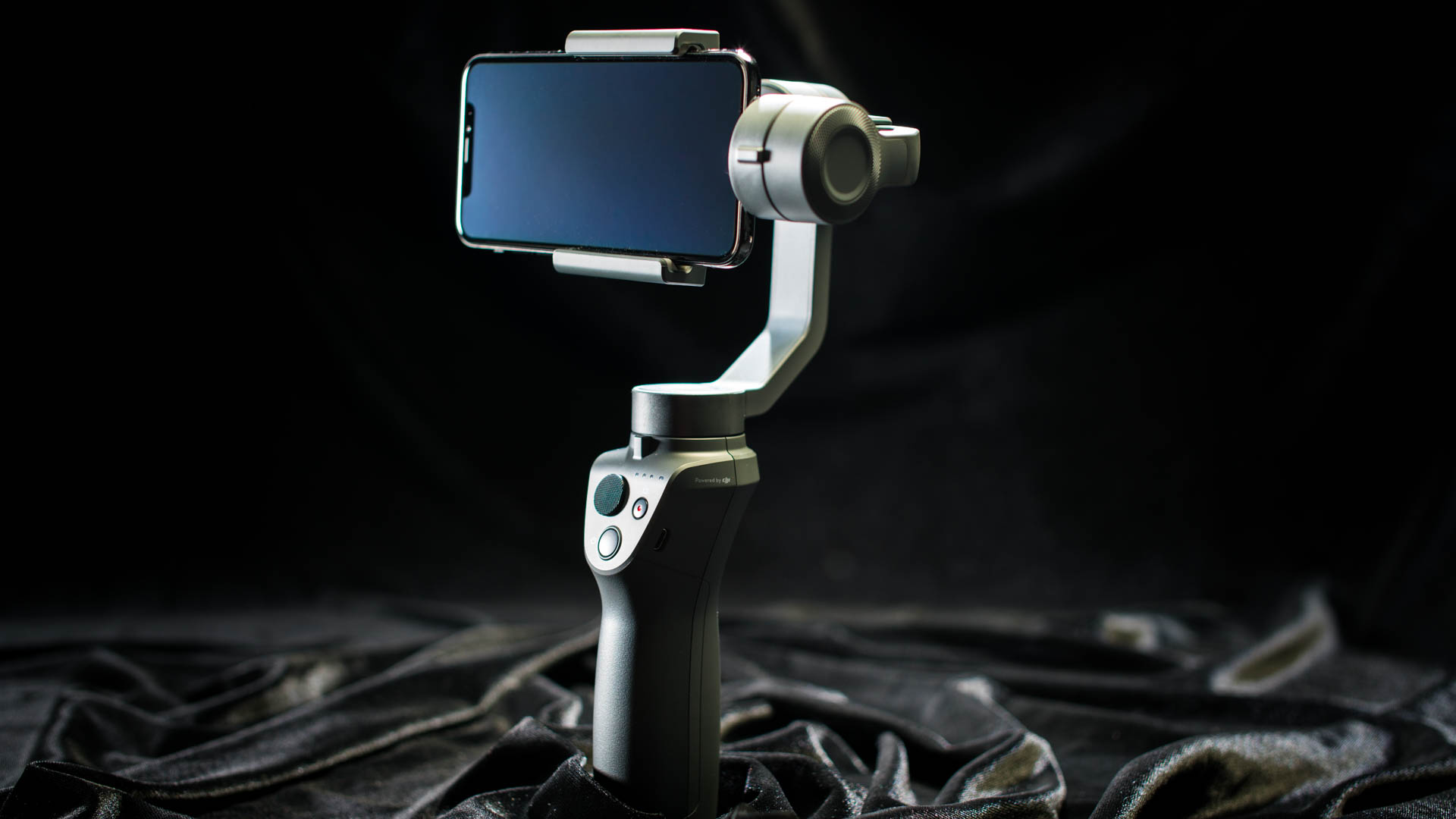
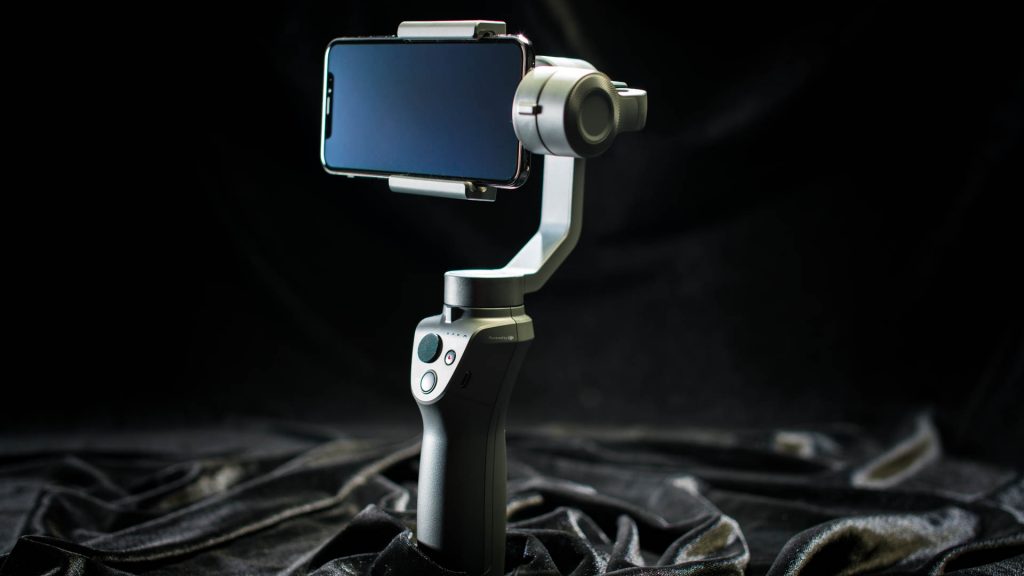
I love snapping pictures, especially when I travel to a new place. I’m not a photographer by any means (that would require some certain level of skill) but I enjoy it all the same, and the process of improving my photography skills is an enjoyable journey. Especially as smartphones come stacked with substantial camera hardware and mountains of apps are available for photo editing, it’s hard not to find a little photographer in all of us.
The same can be said for videography if not more so, exacerbated by Instagram turning everyone into a content creator with instant access to edit and share footage all from a mobile phone. The argument for cell phone videography is strong— cameras are solid, your phone is always with you (most of us within arm’s reach 24/7), and it makes for a quick-and-easy video capture from a highly portable device. The only consistent production problem is ensuring enough stability to let the optics do their job without the video feed suffering from handheld movement, that is until DJI released their second smartphone gimbal this past January, the Osmo Mobile 2.
What Does a Smartphone Gimbal Do?
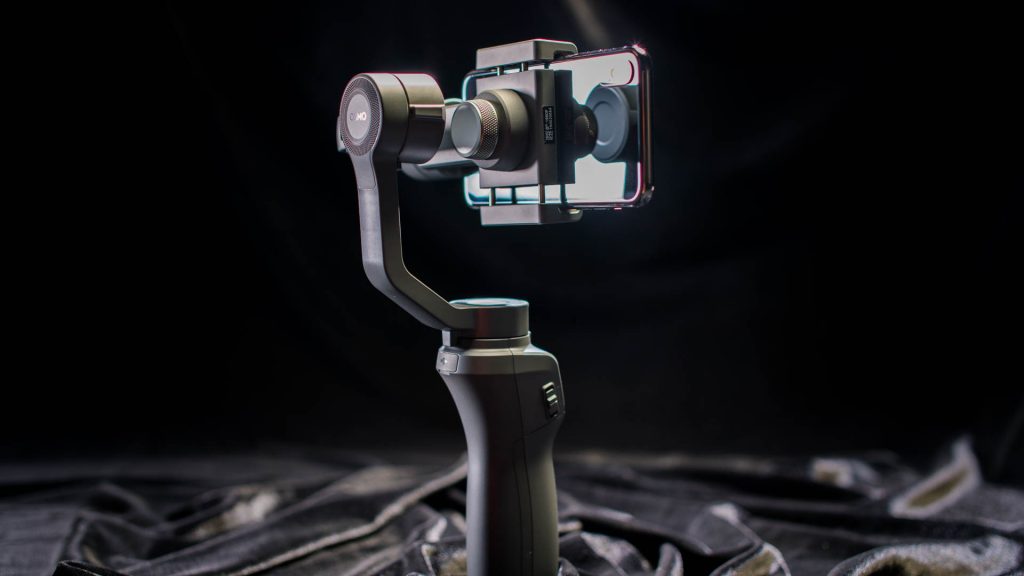
You know when you take a video on your smartphone and think it looks great, only to find upon playback that it looks like someone was filming while using a jackhammer? All the instability that comes with using a handheld device without a tripod is easily transferred over from the hands to the camera, and makes for a poor quality video. Optical image stabilization can help, but also only takes place once the footage is being captured and doesn’t always produce the best results.
Motorized smartphone gimbals like the Osmo 2 remove all the instability that comes with handheld video recording before it gets to the lens, from the major shakes and bumps to the most minor variations in angle and motion. A quick search on YouTube and you can see mounds of examples of smartphone gimbals in action, making for far better content.
Not only do they remove the unwanted motion from the cameraman to produce a smooth video, they also allow for even control of the pan and tilt to increase the overall fluidity of a video. This is a big deal when it comes to creating quality content, and makes a world of difference.
Take Two!
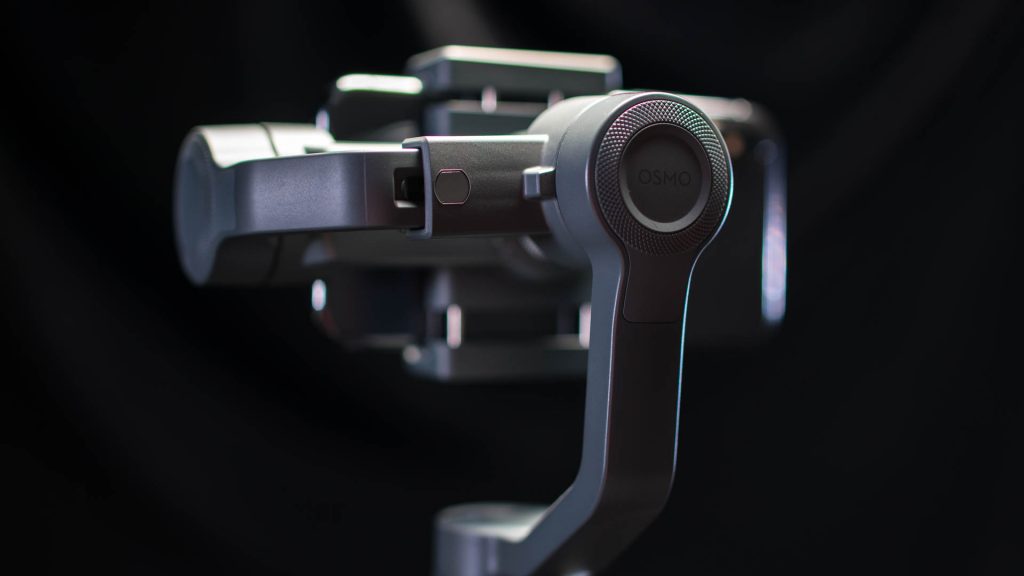
DJI is no stranger to the video field, and in fact aside from their super-intuitive photography drones they are renowned for their high-quality camera optics. For those who aren’t up to date on production camera equipment, DJI has a whole line of cinema-grade gimbals designed to support high-end cameras, so scaling down to a mobile phone application should be a piece of cake.
As far as the Osmo line goes, the Mobile 2 is (as the name implies) the second iteration of their foray into mobile video stabilization. In traditional DJI fashion, they take a concept and go all-out to make it epic and super user-friendly, but the second iteration in the Osmo Mobile line goes far beyond what the first one set out to do.
While the first Osmo Mobile did a great deal to bring the functionality of professional camera equipment to the smartphone user, the Mobile 2 doubled down on the usability for handheld travel videography in a big way.
First off, the Osmo Mobile 2 was a mere $129 upon launch (currently $139 due to increased tariffs from Chinese goods), while the first Osmo Mobile debuted at $299— a huge difference when targeting the smartphone photographer market that would skew towards a cheaper smartphone gimbal. The new upgrades for the second iteration include a slight weight reduction of about 16g, the ability to shoot in either landscape or portrait mode simply by turning the phone adapter, and most notably, an increase in battery life.
The Osmo Mobile 2 is rated at 15 hours (2600 mAh), while the Osmo Mobile is only a four-hour max (980mAh) which is a massive upgrade where it really counts. The battery on the second model is internal and non-removable, unlike the first Osmo Mobile. Personally, having not used the first Osmo before this Mobile 2 I feel for the folks who scooped up the first model in September 2016, only to have the Mobile 2 come out in January 2018 for less than half the cost, and three to four times the battery life.
Who Needs a Smartphone Gimbal?
If you’ve been to any event in the past few years like ComiCon, E3, CES, or Coachella, chances are you’ve seen a swath of people walking around talking to their smartphones for vlogs or social media videos. Those who care about creating quality videos for professional use generally have more advanced tech to improve the quality of the content in terms of video or audio quality, but at the price point for this gadget it’s highly applicable to people making videos for the fun of it.
Even from a professional standpoint, while DSLRs or mirrorless cameras still provide far greater quality than a cell phone, sometimes situations call for portability and flexible maneuvering where a smartphone gimbal is just the right tool for the job.
When it really comes down to it though, anyone who likes to capture video can immediately see the benefit of better stability and control for higher quality content, either for landscape or “selfie” videos.
Coincidentally, I got my hands on the DJI Osmo Mobile 2 shortly before going on my honeymoon and figured it would be a great real-world testing environment for a mobile stabilizer. Figuring my travel would take me to some fun destinations (Amsterdam, Belgium, Ireland), I figured it would be a great chance to capture some memories and packed the whole kit— GoPro, Nikon D3300, Samsung S7, and the Osmo Mobile 2.
Video Production On-the-Go
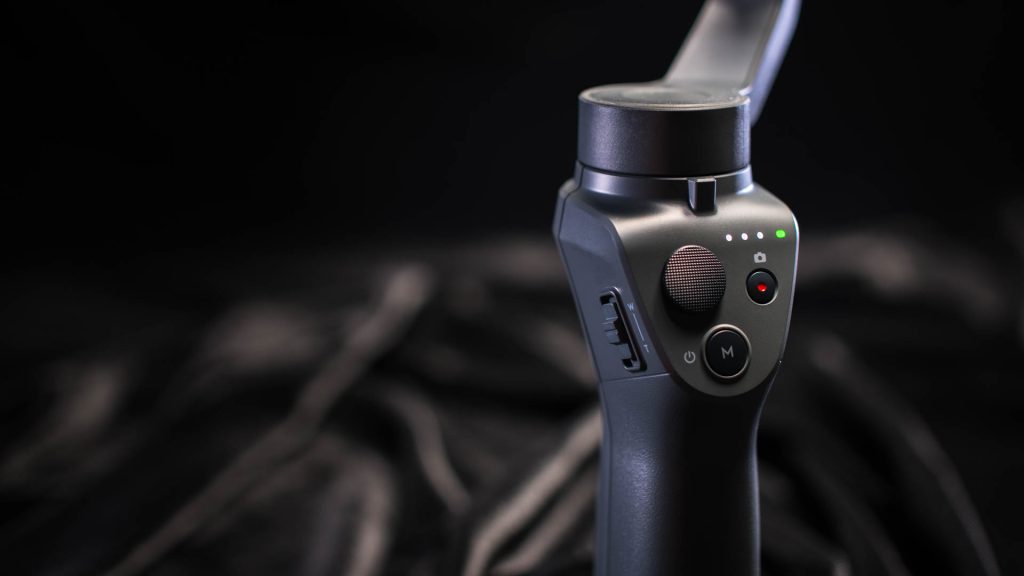
The first thing I noticed when getting into the field with the gimbal was the construction, which is a matte grey plastic that feels well put together. It isn’t heavy by any means at 1.07lbs, but the DJI quality carries through and it feels sturdy. Keeping the smartphone in place are two spring-loaded clamps which can accommodate phones 58.6-84.4mm wide, and up to 8.4mm thick with a rubber grip on all surfaces of the mount.
When it comes to travel videography or mobile content production, most camera equipment needs to be carted around in a backpack without being a burden. At 11-¼”x 4-⅞” x 2-¾”, the Osmo Mobile 2 is pretty slim and fits easily in a backpack crowded with other travel goodies like the DSLR, GoPro on a selfie stick, snacks, powerbank, jackets, and other items that are make their way into an exploration kit. .
With any smartphone gimbal (or any gimbal for that matter) the most important factor is the ability for it to stabilize against unintended movement, while allowing the camera operator to maintain focus on their subject. With this device, that help comes in the form of three brushless motors that work to stabilize against the various passive directional inputs— pan, tilt, and roll. The mechanical range of the pan is 170°, the tilt is +/- 170°, and the roll is -90° to +70°. That is exactly the same range that the Osmo Mobile first-gen has to offer, so the capacity for it to keep the video feed nice and smooth despite bumps and movements is pretty comparable.
Moving to the motorized element, the second-gen model has a controllable range of +/- 160° for pan, and +/- 155° for tilt, which once again is identical to the first generation Osmo’s capabilities. The controllable range of a smartphone gimbal (for those that don’t know first-hand) is an interesting thing. Since the unit is in your hands during filming, you can rotate your arm or wrist in such a fashion to basically keep the movement smooth and fluid, as long as the subject and setting allow for it. Maxing out the control in one direction is definitely not advised for video fluidity as I learned.
What the Osmo Mobile 2 is Like in Action
Out of the box, setup of the unit is really simple and at the most basic level you actually don’t need to use the DJI GO app to use the gimbal. You cannot operate the image capture, zoom, or record buttons from the gimbal interface or any of the fun stuff, but it can operate.
To get the Osmo Mobile 2 ready to use, you simply add the phone to the spring-loaded clip and balance it vertically and horizontally by loosening the locking knobs, and sliding one way or another on the arms. The end result should be a phone that is completely level and balanced, even when the gimbal is powered off.
This helps the motors to properly direct the camera in the angle you expect it to go, and avoids clips that look off-kilt. Also, it helps you maximize that 15-hour (in theory) battery life since the motors won’t be struggling against gravity.
After that, it’s just a matter of downloading the DJI GO app, turning on Bluetooth, and you are off to the races.
After using the Osmo Mobile 2 for a little while for my mobile digital photography needs, I found that the controls were super intuitive. There are only two buttons— one to start and stop recording, and one mode button to switch between Free Mode, Follow Mode, and switch to the selfie camera. The slider on the left side of the handle controls the zoom, while the small joystick controls pan and tilt.
In use, purely the stabilization of the footage nut the Osmo just being on is alone substantial and a huge improvement over handheld mobile videography, and the motors to a killer job of keeping everything balanced and smooth-flowing. Diving into the main shooting modes, there are a couple cool things about each one—
Follow Mode
In Follow Mode the camera is locked in one direction, where the movement from the gimbal does not impact the focus of the camera. This is accessed via one click, and great for capturing motion shots where you want to keep a single subject in focus, like walking and talking to the camera or following an object as it moves along.
Free Mode
In Free Mode the camera smoothly slides with the movement of the gimbal, with a delayed response time so abrupt movements are not translated to the video feed. This mode is entered through two clicks of the “Mode” button from the “Follow” mode, or . I used this most frequently, since many of the shots I took on my trip were walking past objects or capturing wide angle shots where I wanted to have freedom to view a broader picture. This is great when shooting without a more artistic perspective, to focus on the big picture over a specific subject right in front of the lens, and for doing pass-bys on subjects.
Not a specific mode per say, but by double tapping the “Mode” button the gimbal re-centers the camera, which is super useful. Especially when navigating between Free Mode, joystick control, tracking, and Follow Mode, sometimes it really helps to just reset and start fresh. After all, I am not a skilled photographer, but this really helps to make filming easy and not frustrating.
Throughout the entire time I have had the Osmo Mobile 2 it feels at home in my hand, and switching between modes or moving around is super intuitive. A side benefit of the improved battery life of the latest Osmo Mobile is the ability to use it as a power bank for your phone, so while filming it can charge from the 2600mAh LiPo battery via USB. Any time you go out to shoot photo or video backup battery power is a must-have, so this is really appreciated.
Another great element the unit has is a threaded tripod mount on the bottom, so it can be easily combined with a mini-tripod to keep it stable without using handheld power, or set down intermittently. For use with a monopod or full-size tripod it becomes a rock-solid film platform for wider angles that really makes it easy for content creators to conduct interviews or shoot without looking like they are in “selfie mode”.
I can’t say when I reached the power expiration on the gimbal, since I was pretty conservative in my use. I would take it out of my backpack when needed, power on, film, and pop it back into the pack to save battery. Using it like this, the battery life lasted about a week without charging with daily intermittent use (with a two-and-a-half hour charge time from dead).
Cinematic Modes
It isn’t a DJI product if it didn’t have a handful of pre-programmed cinematic modes, and the Osmo Mobile 2 is no exception. With the gimbal, there are five shooting modes that come ready-for-action: ActiveTrack, Timelapse, Motionlapse, Hyperlapse, Panorama, and Slow-Mo.
With ActiveTrack, it’s just about the same tracking that has been used with the recent drones from DJI where a box is drawn around the subject on the app, and camera focus is locked onto this target. I found this helpful when following a moving object that isn’t travelling at a consistent pace, or to vary the shot angle while keeping the subject in focus.
Slow-Mo and Panorama are pretty much the same functionality that come with most cell phones from the factory, but it is nice to access this from the DJI GO app without needing to back out and jump into another photo program.
Timelapse is just what it sounds like. This is best used with the tripod attachment, for capturing motion from various subjects, speeding it up to make it look like time is moving quickly. Like with all the remaining “-lapse” modes with the smartphone gimbal, there are settings to adjust how quickly the clip runs for, and to what degree the speed is set at.
Hyperlapse is very much like Timelapse, in that it warps time to move much faster than normal, however with Hyperlapse there is the added element of the videographer moving as well. This gives a trippy feeling of everything else around moving very rapidly, with the camera moving at a normal pace.
With Motionlapse, the same time warp is captured, however instead of moving the entire position of the gimbal and shooter, you use the directional joystick to adjust the angle of the smartphone gimbal itself. This creates an effect of time rapidly passing the viewer by, while observing it all from a stationary position.
Since I’m no pro videographer, out of the gate these modes took some getting used to to create the effect I wanted, but the interface is wonderfully designed to be the perfect one-button solution for creating incredible shots. These modes can be combined with the use of a tripod, moving shooting platform, or the Follow and Free modes to have a ton of fun and produce really epic footage.
A Cheap Smartphone Gimbal with Huge Potential
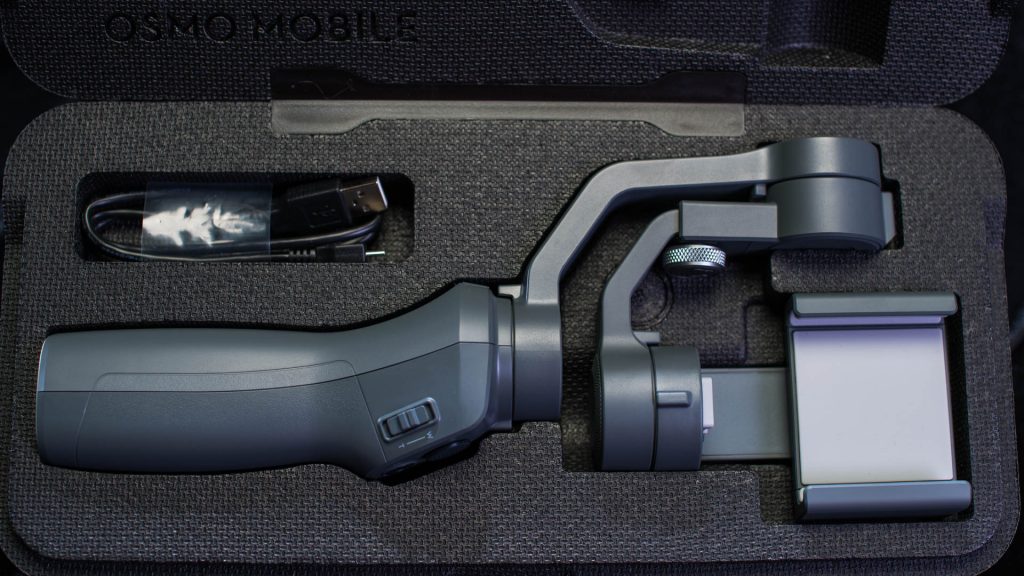
All in all, the DJI Osmo Mobile 2 is a hands-down must-have for anyone who does even the slightest amount of mobile videography, and is a sincere value for the money. Really everyone, from the aspiring Instagram or YouTube content creator to people just looking to bump up the quality of their personal videos can find huge upsides in this small-form gimbal. I was first skeptical of how useful it would be in my personal application, but after a couple weeks on the travel circuit I’m sold it is necessary for diversifying the photo go-bag.
That isn’t to say there aren’t a few things I found to nitpick about it though, and I think it’s fair to note my personal thoughts on where DJI could find areas of improvement for their next model. First off, I keep a case on my phone to keep it safe, but the cell grip doesn’t accompany this very well.
Of course, they can’t accommodate every phone or case combination, but I would like to see some adjustment for the thickness to accommodate different thickness phone covers. Since travel or walking around is a prime use case for the Osmo Mobile 2, it makes sense that they would take some steps to smoothing out the process. The current format predominantly held it secure, but it has popped out once or twice, although most times it was just fine.
From time to time the Osmo will hit a glitch and seizure, especially if quick motion in one direction or another is detected with the gimbal or the range of motion is maxed out. I don’t see this being a major issue, since this is not meant for action capture and through practice of knowing the limits to the unit it can be avoided, but in the meantime plan on taking some time to get acclimated to the limits of the device.
For regular DJI fans, the app situation might be a touch on the cumbersome side, since you have to use DJI GO for the Osmo Mobile 2. Note this is different from the DJI GO 4 app, as the former is supposed to be for products before the Phantom 4 (even though the Osmo Mobile 2 came out after the P4). Regardless of the timing of product release, it is annoying to have two DJI apps on my phone to control the Mavic Air and the Osmo Mobile 2, which is not an uncommon situation considering how both products make for awesome photography companions. In my humble opinion, it makes far more sense for DJI to roll up the Osmo Mobile 2 into their newer version, so fans can have all their new devices controlled within one app.
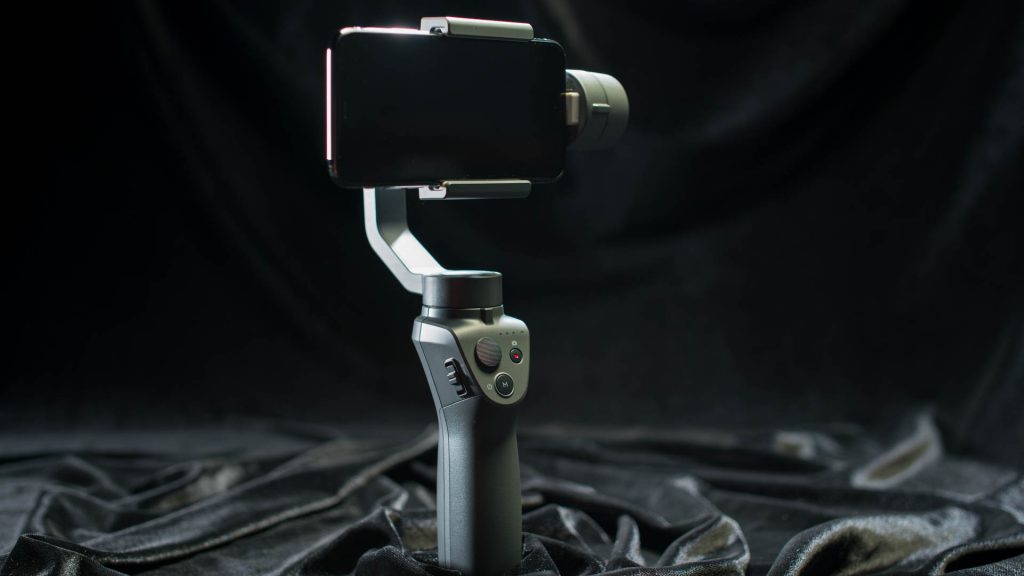
My final suggestion for DJI is more of a seed for thought for the Osmo Mobile 3 (if and when it drops). The ability to switch between forward-facing and rear-facing cameras via the gimbal is great, and there is a ton of value in having this controlled seamlessly via the handheld device.
Where I think DJI take it to the next level would be in taking a page from their own book and putting the camera quality first. I propose adding a quadruple tap of the “Mode” button flip the entire gimbal unit to the front or back, as opposed to just switching between forward and rearward cameras. As we all know, the rear-facing camera on cell phones is far less suited to take quality footage than the forward-facing unit, and finding a solution to best take advantage of this would have been a key way to maximize the usability in a variety of circumstances.
At the end of the day, for $139 the DJI Osmo Mobile 2 smartphone gimbal is the best investment that really anyone can make to up their videography game exponentially. It is cheap enough to be an impulse buy, but has the functionality to serve users at various skill levels and adapt to various use cases. Considering the DJI model is based on quality and user experience beyond all else, they somehow managed to shoehorn a ridiculously affordable price tag into that equation without sacrificing either of the former.
From travel videography to vlogging, product reviews or even livestreaming event coverage, the DJI Osmo Mobile 2 is a must-have tool in the photography chest for quality footage on the go for starters. For professionals looking to have a solid, high-quality tool for 4K video capture the DJI Osmo+ with a dedicated camera is the next step to optimizing production. Those who know they will be tackling that next-level might want to jump up to the big leagues to take advantage of the more advanced features, but with a $649 price tag there is more careful consideration that comes into frame.
Note, all prices and products are accurate at the time of article publication, although some may have changed or are no longer available.
Featured in this article:
DJI Osmo Mobile 2 Smartphone Gimbal- $139

